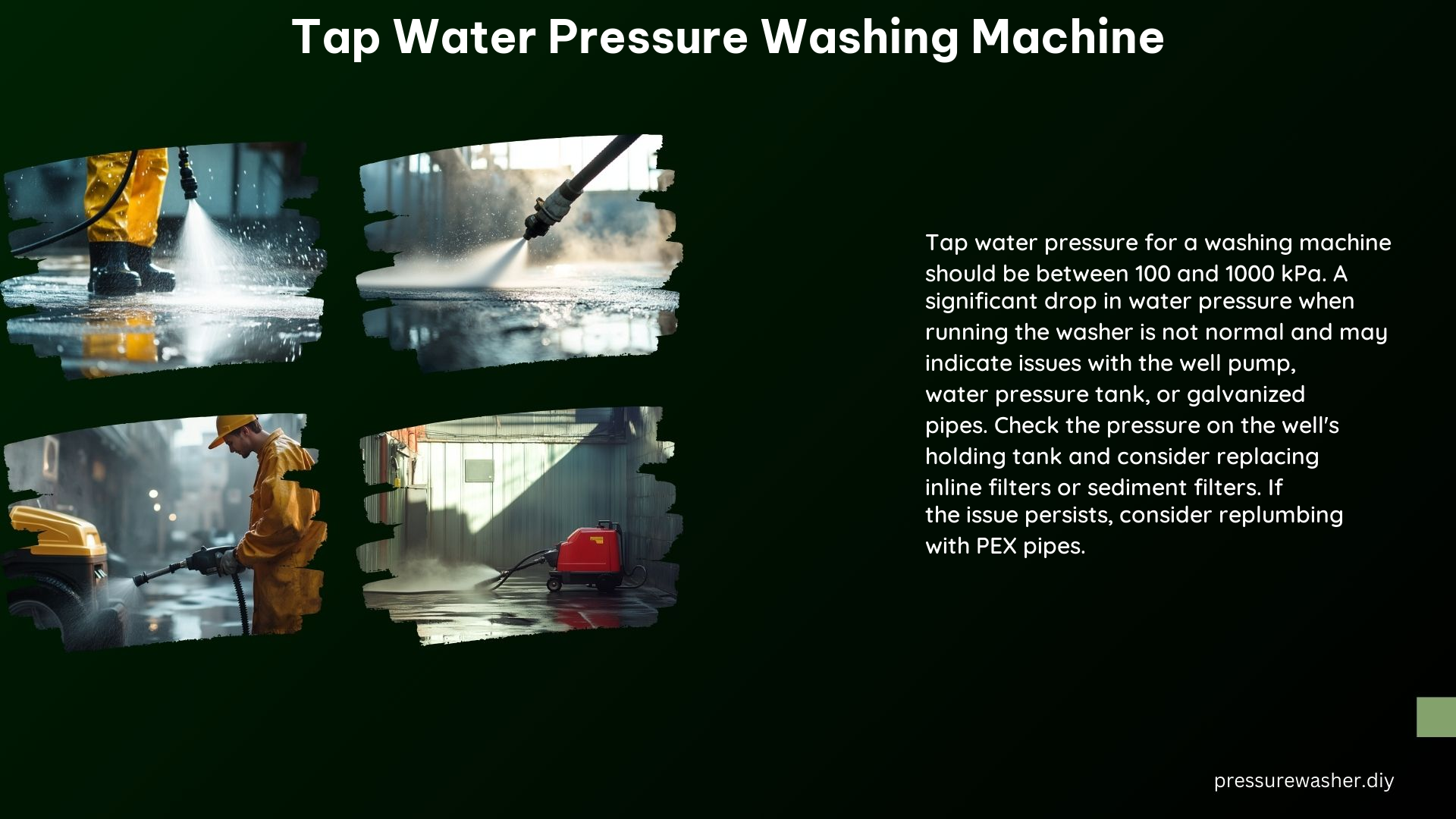Tap water pressure plays a crucial role in the proper functioning of your washing machine. The pressure of the water supply can significantly affect the performance and longevity of your appliance. Here, we will delve into the technical details of how tap water pressure affects your washing machine and the specifications you need to consider for optimal performance.
How Tap Water Pressure Affects Your Washing Machine
Water Pressure Requirements
- Most washing machines require a water pressure between 100 and 1000 kPa (kilopascals) for optimal performance.
- If the pressure is too high, it can cause damage to the machine’s internal components, such as the water inlet valve, water pump, and water hoses.
- If the pressure is too low, the machine may not be able to fill the tub properly, leading to poor washing results, longer cycle times, and increased energy consumption.
Impact on Performance
- Low water pressure can result in inadequate water flow, which can lead to incomplete rinsing, poor detergent dissolution, and reduced cleaning efficiency.
- High water pressure can cause excessive vibration, noise, and even damage to the machine’s suspension system, bearings, and other internal parts.
- A significant drop in water pressure during the washing cycle is not normal and may indicate issues with the water supply system, such as a malfunctioning well pump, a problem with the pressure tank, or blockages in the plumbing.
Common Issues
- Low cold water pressure specifically to the washing machine can be a sign of a problem with the water supply lines or filters, such as sediment buildup or a partially closed shut-off valve.
- Fluctuations in water pressure can also be caused by other household appliances or fixtures that are drawing water simultaneously, such as showers, faucets, or dishwashers.
Technical Specifications

Water Supply Types
- Municipal water supply: Typically provides a consistent water pressure, but the pressure can still vary depending on the local infrastructure and demand.
- Well water supply: Can be affected by the well pump, pressure tank, and any water treatment systems installed, leading to more variable water pressure.
Pressure Measurement
- Water pressure can be measured using a pressure gauge attached to the washing machine’s water inlet or at the main water supply line.
- The pressure should be checked when the machine is running, as the pressure may drop significantly during the fill cycle.
Precautions
- Ensure the water supply line is properly sized and configured to handle the washing machine’s water requirements, typically a minimum of 1/2-inch diameter.
- Regularly check and maintain the water filter to prevent sediment buildup and pressure drops.
- Consider installing a pressure-reducing valve if the water pressure exceeds the recommended range for your washing machine.
Can I Use Tap Water for High-Pressure Washing?
Yes, you can use tap water for high-pressure washing, but it’s essential to ensure the water pressure is within the recommended range for your washing machine. If the pressure is too high, consider installing a pressure-reducing valve to prevent damage to the machine.
DIY Tips
- Check Water Pressure:
- Measure the water pressure at the washing machine’s inlet using a pressure gauge to ensure it’s within the recommended range of 100-1000 kPa.
- If the pressure is too low, you may need to install a booster pump or adjust the well pump’s settings.
-
If the pressure is too high, a pressure-reducing valve may be necessary.
-
Maintain Water Filters:
- Regularly clean or replace the water filters to prevent sediment buildup and maintain consistent water pressure.
-
Clogged filters can restrict water flow and cause pressure drops.
-
Inspect Water Supply Lines:
- Check the water supply lines for any signs of damage, corrosion, or blockages that could affect water pressure.
- Ensure the supply lines are properly sized and configured to handle the washing machine’s water requirements.
By understanding the technical specifications and following these DIY tips, you can ensure your washing machine operates at optimal performance and avoid any issues related to tap water pressure.
References
- Generac. (n.d.). What Precautions Should I Take when Connecting a Water Supply to my Pressure Washer? Retrieved from https://support.generac.com/s/article/What-Precautions-Should-I-Take-when-Connecting-a-Water-Supply-to-my-Pressure-Washer
- Houzz. (2019, November 29). Water pressure in new house drops when washer turned on. Retrieved from https://www.houzz.com/discussions/5831917/water-pressure-in-new-house-drops-when-washer-turned-on
- Reddit. (2021, November 1). Is a significant drop in water pressure normal when running the washer? Retrieved from https://www.reddit.com/r/homeowners/comments/qkf18n/is_a_significant_drop_in_water_pressure_normal/
- DIY Stack Exchange. (2019, May 3). How can I tell water pressure is too high for the washing machine? Retrieved from https://diy.stackexchange.com/questions/164290/how-can-i-tell-water-pressure-is-too-high-for-the-washing-machine
- JustAnswer. (2023, October 26). Low cold water pressure to washer only. Retrieved from https://www.justanswer.com/appliance/nafeu-low-cold-water-pressure-washer-only-just-moved.html
